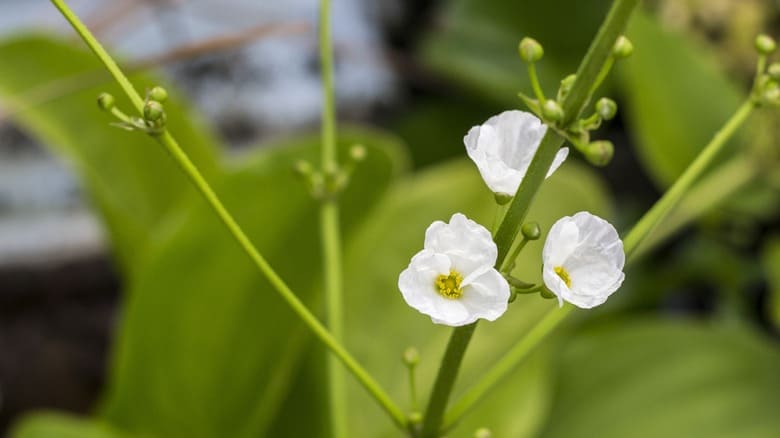Skeleton flowers, known scientifically as Diphylleia grayi, are enchanting plants admired for their unique ability to become translucent when wet. Originating from the cool, shaded woodlands of Japan and the Appalachian Mountains, these delicate beauties are not just fascinating to look at but also require specific care to thrive. Understanding their needs is essential for any gardener or plant enthusiast looking to maintain a vibrant and healthy skeleton flower garden.
Introduction to Skeleton Flowers
Skeleton flowers, named for their extraordinary translucent appearance after rain, are a captivating addition to any garden. Their name stems from the unique way their petals turn clear when wet, revealing the intricate “skeleton” of veins beneath. This phenomenon is due to the plant’s structure, which allows it to absorb water and temporarily change color, creating a mesmerizing effect. Despite their delicate appearance, skeleton flowers are quite resilient when provided with the right conditions.
Essential Factors for Skeleton Flower Health
To ensure your skeleton flowers flourish, several key factors must be considered:
- Soil Conditions
- Skeleton flowers prefer well-draining soil rich in organic matter. A mix of loamy soil with added compost is ideal. This composition ensures that the soil retains enough moisture while allowing excess water to drain away, preventing root rot.
- Conduct a soil test to check the pH level. Skeleton flowers thrive in slightly acidic to neutral soils, with a pH range of 5.5 to 7.0. Adjust the soil pH if necessary using appropriate amendments.
- Light Requirements
- In their natural habitat, skeleton flowers grow under the canopy of taller plants, meaning they prefer dappled sunlight or partial shade. Direct, intense sunlight can scorch their delicate leaves and reduce their vibrancy.
- If growing skeleton flowers in a garden, choose a location that receives morning sun and afternoon shade. In indoor settings, place them near a window with filtered light.
- Watering Needs
- Consistent moisture is crucial for skeleton flowers, but they are susceptible to overwatering. Water them when the top inch of soil feels dry to the touch. Ensure that the soil remains moist but not soggy.
- During the winter months, reduce watering frequency as the plant’s growth slows down. Overwatering in winter can lead to root rot and other fungal issues.
- Temperature and Humidity
- Skeleton flowers prefer cool temperatures, ideally between 50°F to 70°F (10°C to 21°C). They are not frost-tolerant, so protect them from freezing temperatures during winter.
- Maintain moderate humidity levels around the plants. In dry climates, consider using a humidifier or placing a tray of water near the plants to increase ambient humidity.
- Fertilization
- Feed skeleton flowers with a balanced, water-soluble fertilizer during the growing season. A general-purpose fertilizer with equal parts nitrogen, phosphorus, and potassium (e.g., 10-10-10) works well.
- Avoid over-fertilizing, as excessive nutrients can lead to lush foliage at the expense of flowering. Follow the manufacturer’s instructions for dosage and application frequency.
- Pest and Disease Management
- Skeleton flowers are relatively resistant to pests, but they can occasionally attract aphids, spider mites, and whiteflies. Regularly inspect your plants for signs of infestation and treat them with appropriate insecticidal soap or neem oil if needed.
- Prevent fungal diseases by ensuring proper air circulation around the plants and avoiding overhead watering. If you notice signs of fungal infections such as leaf spots or powdery mildew, use a fungicide and remove affected plant parts.
Cultivating Skeleton Flowers in Different Environments
Whether you are growing skeleton flowers in a garden or as indoor houseplants, their care requirements remain consistent. Here are some additional tips for cultivating them in various environments:
- Outdoor Gardens
- In outdoor gardens, consider planting skeleton flowers in a shaded woodland garden or a border with other shade-loving plants. Grouping them with companion plants like hostas or ferns can enhance their visual appeal and provide a suitable microenvironment.
- Indoor Gardens
- For indoor cultivation, use a high-quality potting mix designed for container plants. Ensure the pot has adequate drainage holes to prevent waterlogging. Rotate the pot occasionally to provide even light exposure and promote balanced growth.
Conclusion
Skeleton flowers, with their ethereal beauty and fascinating water-responsive petals, offer a unique charm to any garden or indoor space. By understanding and catering to their specific needs—such as soil composition, light exposure, watering practices, and temperature control—you can enjoy their delicate beauty year-round. Regular maintenance and attentive care will ensure your skeleton flowers remain healthy and vibrant, revealing their stunning translucent petals whenever the rain comes. With these tips, you’ll be well on your way to unlocking the secrets of perfect skeleton flower health and enhancing your garden with these magical plants.

